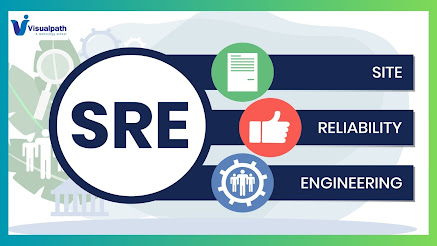SRE Code : Site Reliability Engineering Explained | Visualpath
In the fast-paced digital landscape, ensuring the reliability and performance of online services is paramount. This is where Site Reliability Engineering (SRE) emerges as a key discipline, blending software engineering with IT operations to create robust and scalable systems. SRE is not just a team or a set of practices; it's a mindset focused on achieving and maintaining reliable services.
In simple terms, Site Reliability Engineering (SRE) is a set of practices that focuses on making sure websites and online services run smoothly and reliably.At its core, SRE aims to bridge the gap between development and operations by applying software engineering principles to infrastructure and operations problems. The SRE team operates on the premise that reliability is a feature that should be prioritized alongside the development of new features. By doing so, they contribute to an organization's ability to provide a seamless and reliable digital experience for users. -Site Reliability Engineer Online Training in India
One of the central tenets of SRE is the implementation of Service Level Objectives (SLOs) and Service Level Indicators (SLIs). These metrics help define the acceptable level of reliability for a service and provide a foundation for making informed decisions about system improvements. SREs utilize these metrics to monitor and measure the performance of a system, ensuring that it meets the required standards for availability and performance.
Automation plays a crucial role in the SRE approach. By automating repetitive tasks, SREs can focus on strategic initiatives, leading to increased efficiency and reliability. Automation not only accelerates problem resolution but also minimizes the risk of human error, a key factor in maintaining a reliable system. - Site Reliability Engineering Course
Incident response is another vital aspect of SRE. When issues arise, SREs leverage their expertise to resolve problems quickly and implement preventive measures to avoid recurrence. This proactive approach aligns with the SRE principle that treating operational work as a software problem can lead to scalable solutions.
Site Reliability Engineering is a discipline that ensures the seamless functioning of digital services by integrating software engineering practices with operational tasks. By prioritizing reliability, implementing SLOs, leveraging automation, and adopting a proactive incident response approach, SREs contribute significantly to the overall success of an organization's digital infrastructure. In a world where user expectations for reliability are continuously rising, the role of SRE has become indispensable for businesses aiming to deliver exceptional and dependable online experiences.
Visualpath is the Best Software Online
Training Institute in Ameerpet, Hyderabad. Avail complete Site Reliability Engineering Online Training by
simply enrolling in our institute, Hyderabad. You will get the best course at
an affordable cost.
Attend Free Demo
Call on - +91-9989971070.
Visit : https://www.visualpath.in/site-reliability-
engineering-sre-online-training-hyderabad.html




Comments
Post a Comment